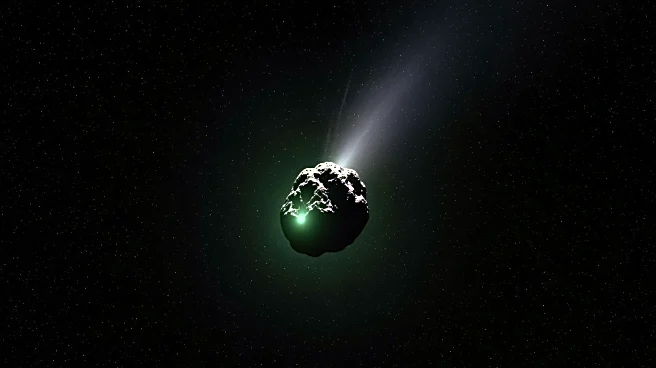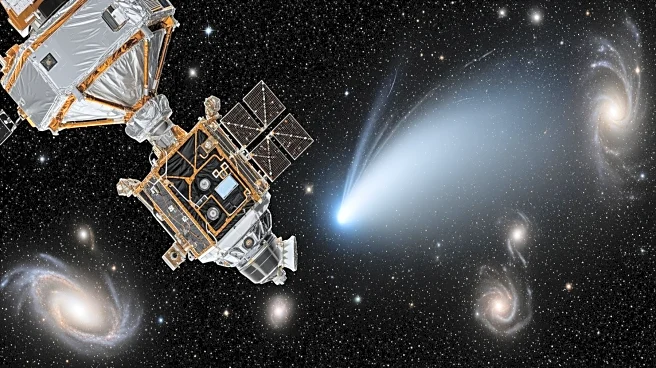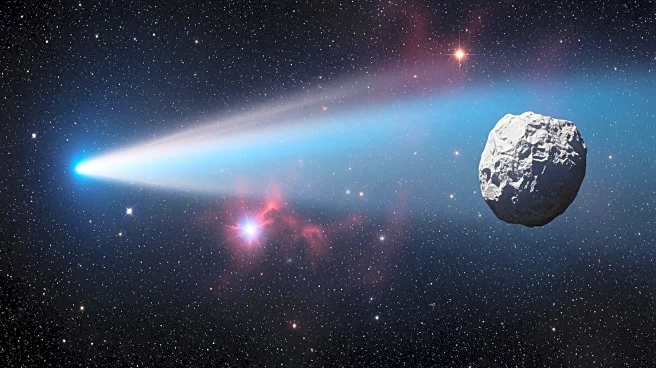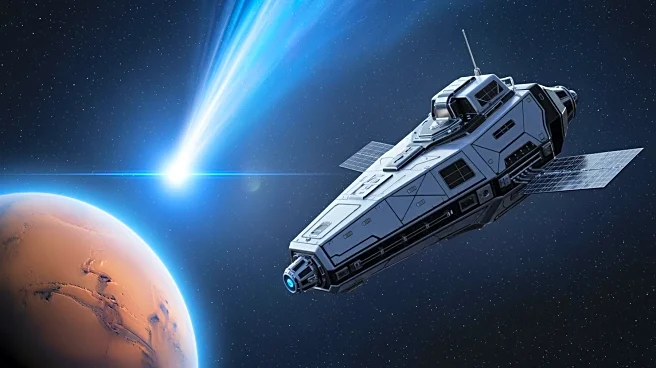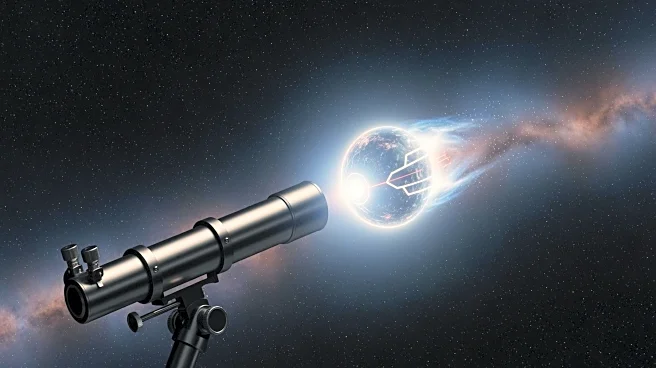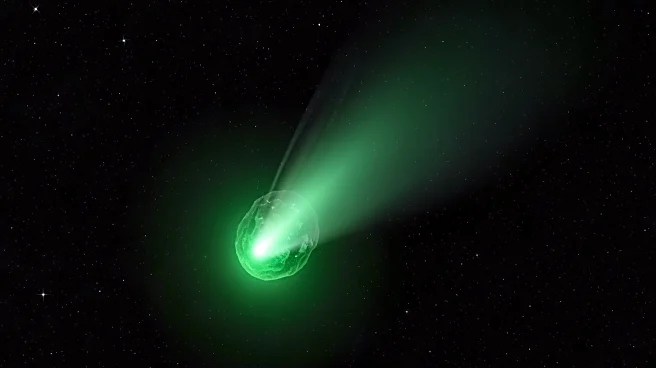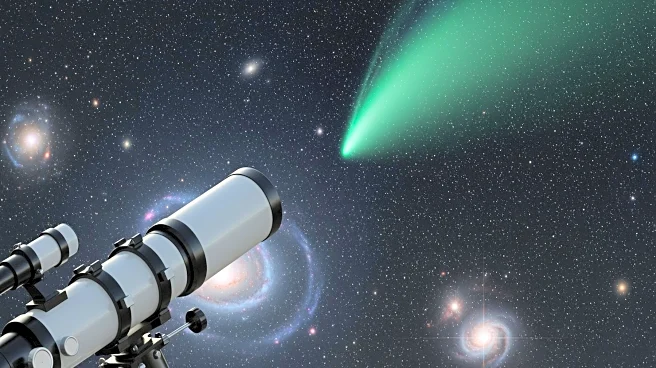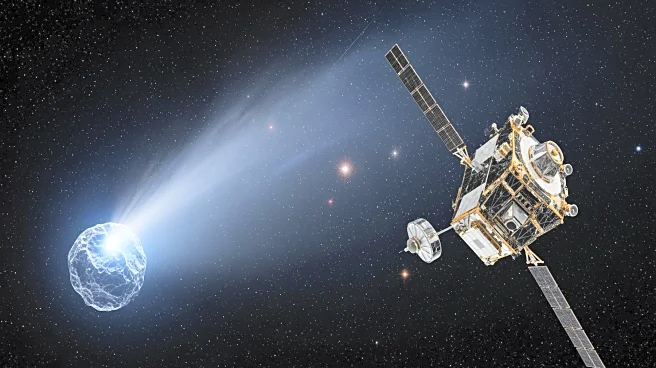What's Happening?
Researchers are closely observing the interstellar comet 3I/ATLAS, which has recently passed its closest point to the Sun. The comet is exhibiting unusual behavior, including glowing green and seemingly
lacking a visible tail. Qicheng Zhang from Lowell Observatory used a filter to detect diatomic carbon particles, which are responsible for the green glow. Despite appearances, the comet does have a tail, which is positioned almost directly behind it, making it difficult to see. The comet has gained significant attention since its discovery in July, with China's Tianwen-1 orbiter capturing images during its flyby of Mars. Astrophysicist Avi Loeb has suggested that the comet may have non-cometary characteristics, potentially indicating extraterrestrial origins.
Why It's Important?
The study of interstellar objects like 3I/ATLAS is crucial for understanding the dynamics and composition of celestial bodies that enter our solar system. The comet's unusual characteristics have sparked interest in its potential as an extraterrestrial probe, which could have implications for our understanding of interstellar travel and communication. The observations and data collected from 3I/ATLAS could provide insights into the behavior of similar objects and contribute to the broader field of astrophysics. Additionally, the involvement of international space agencies highlights the global interest in space exploration and the potential for collaborative research efforts.
What's Next?
Further observations and studies are expected to continue as researchers aim to uncover more details about 3I/ATLAS's composition and behavior. The data collected by various space agencies, including NASA and CNSA, will be analyzed to determine the comet's characteristics and potential origins. Political figures, such as GOP Rep. Anna Paulina Luna, have called for the release of additional data and images from NASA to advance understanding of interstellar visitors. The ongoing research may lead to new discoveries about the nature of interstellar objects and their interactions with our solar system.
Beyond the Headlines
The investigation into 3I/ATLAS raises questions about the ethical and scientific implications of studying interstellar objects. The potential for these objects to be of extraterrestrial origin challenges existing paradigms and could lead to shifts in how we approach space exploration and the search for extraterrestrial life. The comet's behavior also highlights the limitations of current technology in capturing and analyzing distant celestial bodies, prompting discussions about the need for advancements in space observation techniques.


